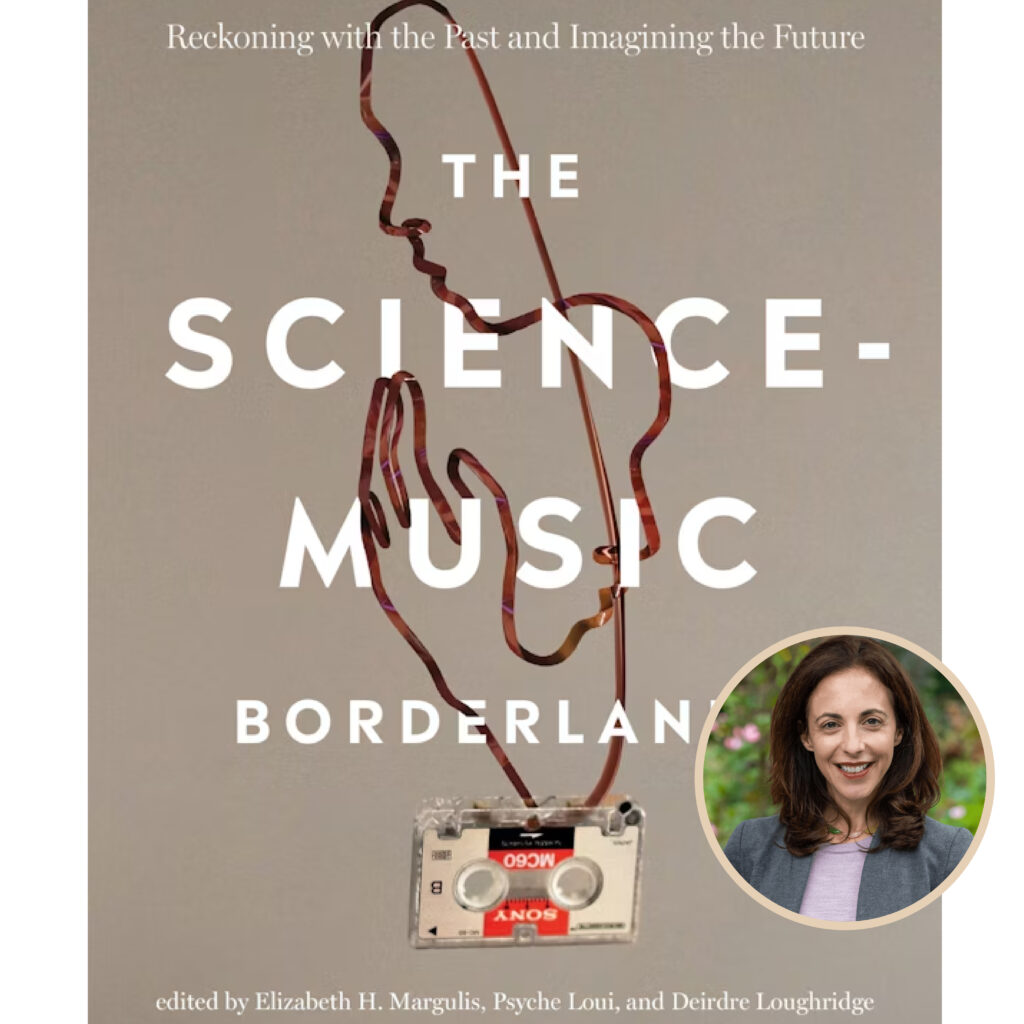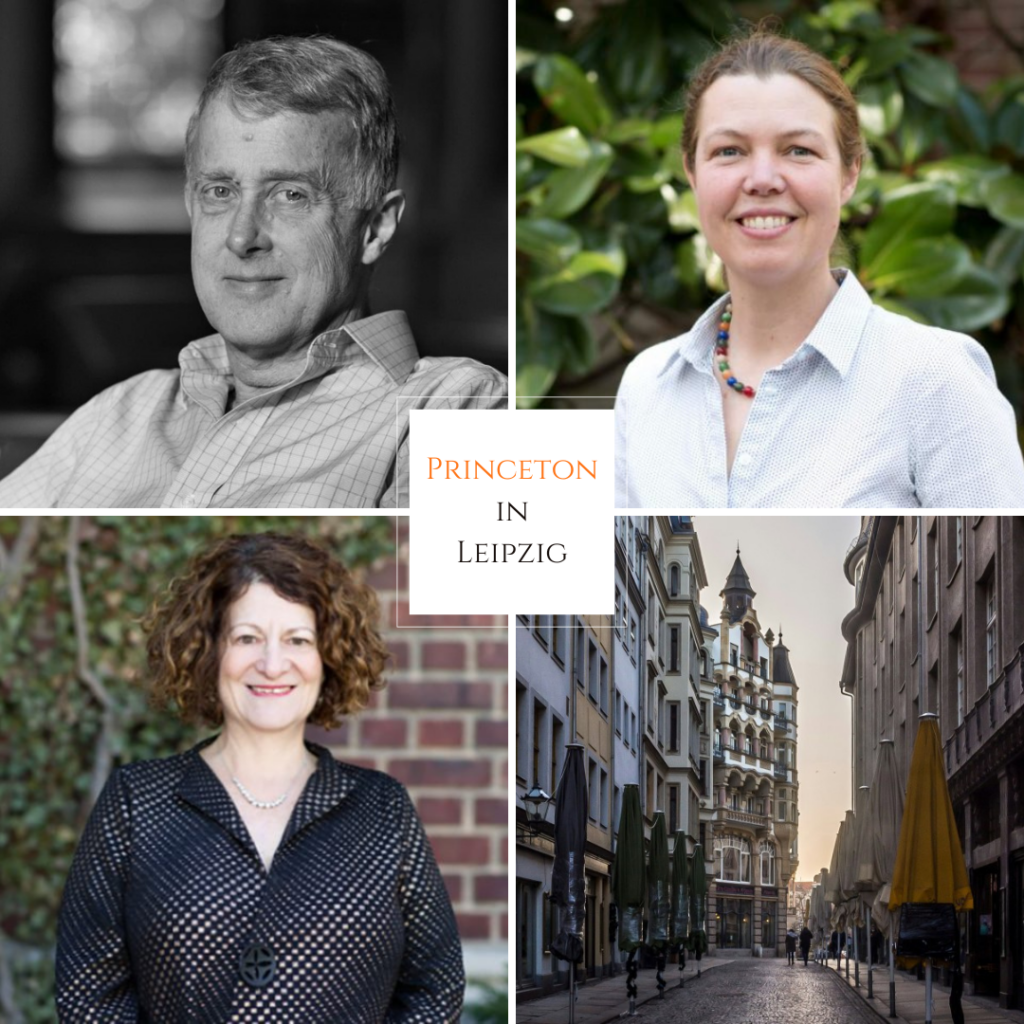Dan Trueman, Chair of the Music Department, introduces Norwegian folk instruments to a new generation of composers and performers.
By: Cameron Lee ’22

from Music at the Anthology, Inc. (MATA)
At a cursory glance, the hardanger fiddle from Norway may simply seem like an elaborately decorated violin. The fingerboard and tailpiece glimmer with the opalescent shine of ebony and mother-of-pearl inlays, and the instrument’s scroll has been sculpted into the head of an animal. Intricate patterns swirling around the edge of the instrument are the result of rosemaling—a traditional folk art practice from Norway that emerged during the 1700s.
Yet upon closer inspection, one notices curious differences to the build of the instrument as well. The hardanger most often has nine tuning pegs rather than the violin’s customary four, which are tied to additional strings that run underneath the fingerboard into the bridge of the instrument. These so-called “sympathetic strings” feed through a secondary opening in the bridge and terminate at an apex atop the tailpiece. Running a hand across the surface of the instrument, one may observe that the strings and wood of the instrument itself are also thinner than what is standard for a modern violin.
Dan Trueman, current chair of the Music Department and a professional hardanger fiddler, has sought to preserve the legacy of this eclectic instrument at Princeton University by creating opportunities for student musicians and composers to make music for the instrument. Due to its history and construction, in many ways the hardanger runs antithetical to the history and method endemic to modern Western instruments such as the violin and the cello, offering a rich archive of possibilities for expanding the Department’s orientation beyond the canon and envisioning new ways of theorizing music performance.
Trueman notes that the seemingly minor discrepancies in the physical construction between the violin and the hardanger amount to significant differences in the sonic quality of the instrument. Although similar in size and shape to the violin, the extra set of sympathetic strings amplify the resonance of the hardanger fiddle and invite the performer to play with gestural, sweeping bow strokes to coax a ringing tonality from the instrument.
For Trueman, who first heard the hardanger on a cassette tape recording in the 1990s, it was love at first listen. “It had this incredible sparkle and luminance to it,” he said. Though classically trained as a violinist, Trueman had begun to explore other music traditions and instruments, including jazz and electric instruments. The hardanger, with its analogous technical demands, offered Trueman a thrilling opportunity to not only explore a different type of music, but also discover a novel form of music making.
Trueman describes three primary differences between the violin and the hardanger in tuning, rhythm, and performance. While the violin is tuned to G-D-A-E, the hardanger most usually follows the pattern of A-D-A-E—although as Trueman points out, there are dozens of varying tuning patterns within the tradition—with its sympathetic strings below tuned to B-D-E-F#-A to vibrate in harmony with the top strings. The pacing of traditional music for the hardanger is also much unlike classical compositions, with complex rhythms that often defy subdivision and must instead be felt by the body.
But according to Trueman, the most significant difference between the violin and the hardanger lies in the way the instruments yearn to be played. While the violin is optimized to project to the back of a large hall over an orchestra requiring a forceful physicality, Trueman emphasizes that the hardanger is designed to be played for a small audience.
“The hardanger fiddle is all about creating a warm, resonant space for a small group of people,” he said.
Typically, Trueman notes, the traditional setting for the hardanger is in the room of a small house, with dancers circling the fiddler positioned in the middle of the space. Sometimes, oral storytelling is also invoked as a part of the listening experience. “It’s a totally different intention than the concert violin… My body changes when I play it. My shoulders sit different, it feels different. And what I’m trying to express and communicate with other people is entirely different because of that,” he observed.
Since first deciding to devote practice to the fiddle in the 1990s, Trueman has become a pivotal force in what seems to be a hardanger renaissance. In 2010, he commissioned Norwegian luthier Salve Håkedal to build a new five-stringed instrument that would come to be known as the hardanger d’amore. Slightly larger and broader than a violin, the hardanger d’amore has an additional extra low string, similar to a viola, and unlike a traditional hardanger, does not include rosemaling. There are now more than 50 hardanger d’amores in circulation.
More recently, in July 2024, Trueman acquired a matching quartet of hardanger instruments—two violins, a viola, and a cello—for the Music Department at Princeton University from Lynn Berg. Berg is one of few luthiers in the world who produces hardanger instruments, and has been devoted to the craft for several decades. Of the five hardanger cellos in the world, Berg has made three of them.
In search of a home for his hardanger quartet, Berg spoke to several museums and individuals, but ultimately decided to entrust Trueman with the stewardship of the instruments due to Trueman’s promise to give the instruments a life of their own. “I told him that at Princeton, I would do a graduate seminar composing for these instruments, and I would put them in the hands of students and professionals so that they would get played all the time,” Trueman said. “At Princeton, they wouldn’t just be sitting on the wall of a museum—they would be out in the world, and we’d have people studying the tradition and writing new music for it,” he added.
Trueman has held true to his word. On March 29th in New York, he participated in a tripartite symposium with the Bergamot Quartet to honor the instruments. During the initial workshop, the Bergamot Quartet performed eight compositional sketches created for the hardanger instruments. Trueman participated in selecting the eight pieces from a list of twenty submissions, and was also present on site all afternoon with the composers and the musicians to participate in the workshop. The composers ranged from those who are still finishing their undergraduate degrees in composition to mid-career professionals who are more accomplished.
The second part of the symposium consisted of a “meet and greet” where those present could examine the hardanger instruments up close and learn how they work. The evening closed with a performance by the Bergamot Quartet, featuring original works for the hardanger quartet composed by Trueman.
Trueman’s collaboration with the Bergamot Quartet is one of several events linked to the hardanger occurring during the month of March. The same weekend as the symposium, the Kronos Quartet performed a new piece by Norwegian artists Benedicte Maurseth and Kristine Tjøgersen featuring hardanger instruments made by a luthier in Norway just last year. Moreover, Paul Wiancko, who is the cellist of Kronos, created an arrangement of a piece called “Ricercar” originally composed by Trueman for hardanger shortly after he had first discovered the instrument. “Ricercar” is the second track on an album by the Owls quartet, of which Wiancko is also a member. The album just came out last month on March 14, 2025.
Trueman noted the serendipity of the recent confluence of interest in the hardanger. “It’s stranger than fiction, but it makes me happy,” he laughed. The luthier who created the instruments played by Kronos, Ottar Kåsa, also attended the Bergamot performance, where spontaneous dance broke out toward the end of the concert. Trueman is currently in touch with Kåsa and Maurseth, and is in conversation with Wiancko about the possibility of collaborating with Kronos and perhaps creating an octet for the two sets of hardanger instruments.
“To me, the confluence of these things and the hardanger’s rising popularity speaks to the fact that there’s something about this instrument—this different design, this different expressive space—that is of interest to people coming from a lot of different places,” Trueman reflected. “It has a capacity to bring people together in ways that are meaningful, and not just novel.”
In Other News

Elizabeth Margulis on the Frontiers of Music Cognition
Jan 22, 2025
The Department of Music is thrilled to congratulate musicology professor and Director of Graduate Studies Elizabeth Margulis, who has received the Ruth A. Solie Award for her editorial contributions to The Science-Music Borderlands: Reckoning with the Past and Imagining the Future.

Announcing the Launch of Princeton in Leipzig
Jan 7, 2025
Enrollment in “Princeton in Leipzig” has been extended to March 2, 2025! The Princeton Music Department is excited to announce the launch of Princeton in Leipzig, a summer study abroad …

Gavin Steingo Named 2024-25 Getty Research Institute Scholar
Jun 28, 2024
The Department of Music is excited to announce that Gavin Steingo, Professor of Music and Director of Undergraduate Studies, received a prestigious year-long fellowship at the Getty Research Institute (GRI) in …

